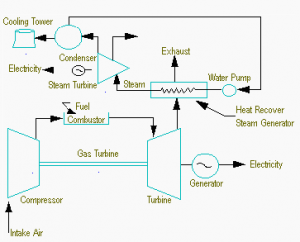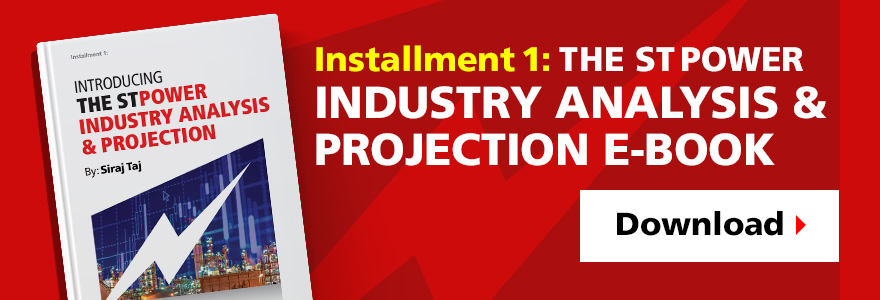Operational optimization may be the key to keeping your power plant productive, even with ageing assets.
Operational optimization gives you the tools to address decarbonization, renewables, smart grid technologies, centralized vs. decentralized generation, market demand for reliable, efficient, and cleaner energy, which have all essentially invalidated traditional assumptions and rules of participation in the power market.
The daunting challenge for plant owners is to maintain the viability of their power generating assets, particularly the Combined Cycle Power Plants, to competitively respond to shifting market demand and continue to create stakeholder value.
Competitive viability of an asset is measured in terms of its availability, reliability, and how quickly it meets energy demand. In other words, the time it takes a combined cycle plant to reach the demand load from the moment the ISO (Independent System Operator) dispatches it determines an asset’s competitive viability.
The answer lies in commercial and operational optimization of the asset. Commercial optimization commits the asset Availability to the market, and operational optimization fulfills that commitment by meeting the energy demand at the least cost. Furthermore, owners are constantly looking for ways to improve the overall performance of their assets to generate few extra MW while burning less fuel. In other words, higher output, and better heat rate.
There are 2 ways to achieve operational optimization and to maximize asset performance;
- A robust maintenance program
- Implement and upgrade packages to improve performance
Newer plants are already operating assets with the latest technologies, including upgrade packages as standard offerings for higher output, better heat rate, and optimum asset performance. For plants operating ageing technology who are unable to undertake costly upgrades, there are ways to improve overall plant performance by way of implementing a robust maintenance program to extract additional power output and improve heat rate.
In a combined cycle power plant, gas turbines produce power and exhaust gases (waste heat). Exhaust gas is then processed thru HRSG to create steam to operate the steam turbine for additional power output.

To improve plant performance without implementing costly upgrades, owners should adopt basic maintenance practices such as;
Clean air-intake
A substantial portion of a turbine’s energy is used by the compressor, which means dirty compressor blades can have a serious effect on efficiency because dirty compressor blades cause turbulent airflow which degrade performance. It is not a new idea to maintain high air quality by regularly changing filters; however, poor-quality inlet air can lead to blade erosion and corrosion of turbine components, both of which affect efficiency.
Operational Adjustments
Examine the low-load setpoints on gas turbines. These can have adverse effects on gas turbines and ultimately create downstream effects on the steam turbine. When the steam turbine operates at low loads, exhaust the thermal energy before the steam reaches the final stages and get condensation. In other words, any consideration for low-load setpoints on the gas turbine should also consider its effects on the rest of the plant.
Combustion tuning
An automated combustion tuning system, such as ECOMAX is designed to solve performance instabilities, maintain emissions compliance, particularly for NOx. GT operation with lean premixed flames keeps NOx low but could cause instability in combustion dynamics resulting in damage to turbine components over time. Additionally, such instabilities are exacerbated by large ambient temperature swings – common in many areas where gas is a major component of the power mix. Using real-time monitoring of combustion dynamics and emissions, the ECOMAX automatically tunes combustion to keep the turbine within the optimized operational envelope.
Low-Load Combined Cycle Operation
Combined cycle plants often do not operate at low loads because the system is optimized for baseload operation, and improper optimization can result in damage to the heat recovery steam generator, as well as emissions violations. However, giving up the ability to operate at low loads can mean lost revenue.
The Electric Power Research Institute (EPRI) recently conducted a proprietary study determining the best way to optimize combined cycle operation using GE 7FA turbines. The study found that a tradeoff between lower exhaust gas temperature and higher exhaust flow would allow lower-load operation without damage to the HRSG and without causing NOx emissions to spike.
Though there are trade-offs with nearly any performance enhancement, plant operators have more options these days than ever. Here are few examples of improvement options to consider;
a. Fuel type
i. Single fuel – Natural gas only
ii. Dual fuel – Natural gas and Liquid fuel (ULSD)
b. Operating Flexibility
i. Full load / Base load operation
ii. Part load operation
iii. Low load operation
c. Fast Start capability
i. Shorter time to achieve full load operation
ii. Higher ramp rate
d. Spinning Reserves
i. Higher availability
ii. Lower Variable O&M (VOM) cost
iii. Increase life cycle of HGPP
iv. Reduce cycling events – Start & Stop
By no means are these the only options plant owners must implement to get the most out of their assets. ST Power Services will apply a pragmatic process to evaluate the true potential of the asset based on historical O&M practice. We will then establish a baseline, and offer cost-effective solutions to optimization plant operation, improve asset competitiveness, and maximize business results.


